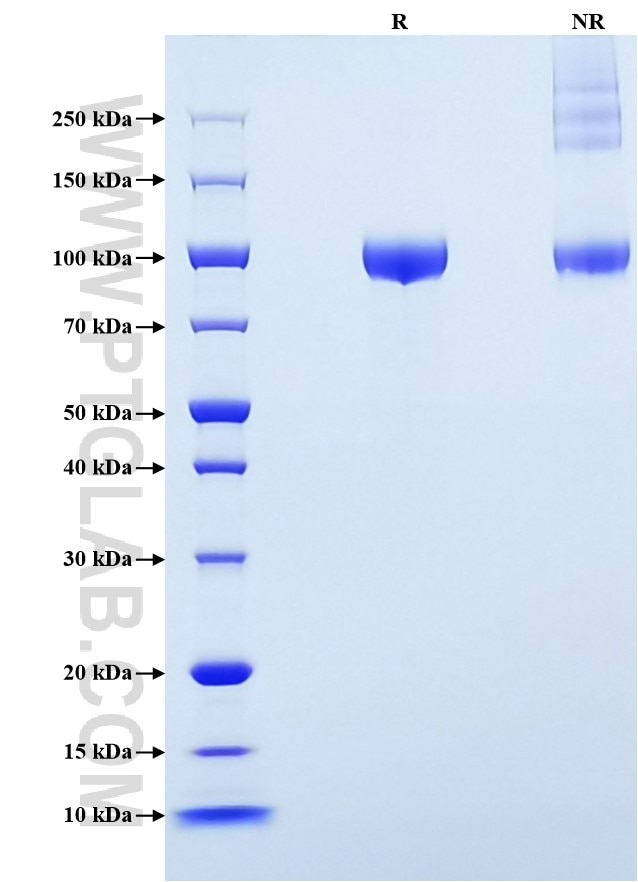Recombinant Mouse MMP-9 protein (His Tag)
Species
Mouse
Purity
>90 %, SDS-PAGE
Tag
His Tag
Activity
not tested
Cat no : Eg0452
Validation Data Gallery
Product Information
| Purity | >90 %, SDS-PAGE |
| Endotoxin | <0.1 EU/μg protein, LAL method |
| Activity |
Not tested |
| Expression | HEK293-derived Mouse MMP-9 protein Ala20-Pro730 (Accession# P41245) with a His tag at the C-terminus. |
| GeneID | 17395 |
| Accession | P41245 |
| PredictedSize | 82.6 kDa |
| SDS-PAGE | 90-110 kDa, reducing (R) conditions |
| Formulation | Lyophilized from 0.22 μm filtered solution in PBS, pH 7.4. Normally 5% trehalose and 5% mannitol are added as protectants before lyophilization. |
| Reconstitution | Briefly centrifuge the tube before opening. Reconstitute at 0.1-0.5 mg/mL in sterile water. |
| Storage Conditions |
It is recommended that the protein be aliquoted for optimal storage. Avoid repeated freeze-thaw cycles.
|
| Shipping | The product is shipped at ambient temperature. Upon receipt, store it immediately at the recommended temperature. |
Background
MMP9 (matrix metallopeptidase 9), also named as Gelatinase B, is a member of matrix metalloproteinase (MMP) family. The MMP family of enzymes is comprised of critically important extracellular matrix remodeling proteases whose activity has been implicated in normal embryogenesis, tissue remodelling and many diseases such as arthritis, cancer, periodontitis, glomerulonephritis, encephalomyelitis, atherosclerosis and tissue ulceration. MMP9 is produced by a variety of normal and transformed cells including neutrophils, monocytes, macrophages, astrocytes, fbroblasts, osteoclasts and so on. Transgenic mouse models report that MMP9 contributes to skin carcinogenesis, suppresses development of experimental abdominal aortic aneurysms, and triggers the angiogenic switch during carcinogenesis.
References:
1.Roy, Roopali et al. J Clin Oncol. 2009 Nov 1;27(31):5287-97. 2.Tanindi, Asli et al. Open Cardiovasc Med J. 2011;5:110-6. 3.Coussens, L M et al. Cell. 2000 Oct 27;103(3):481-90.

